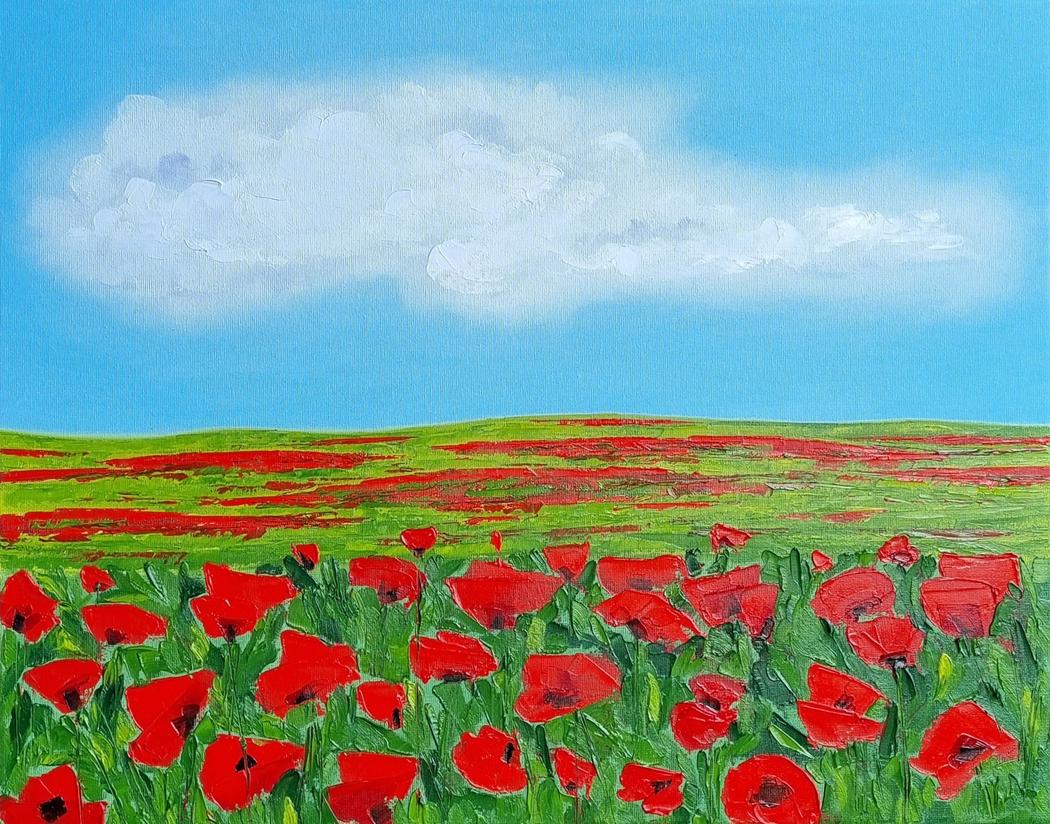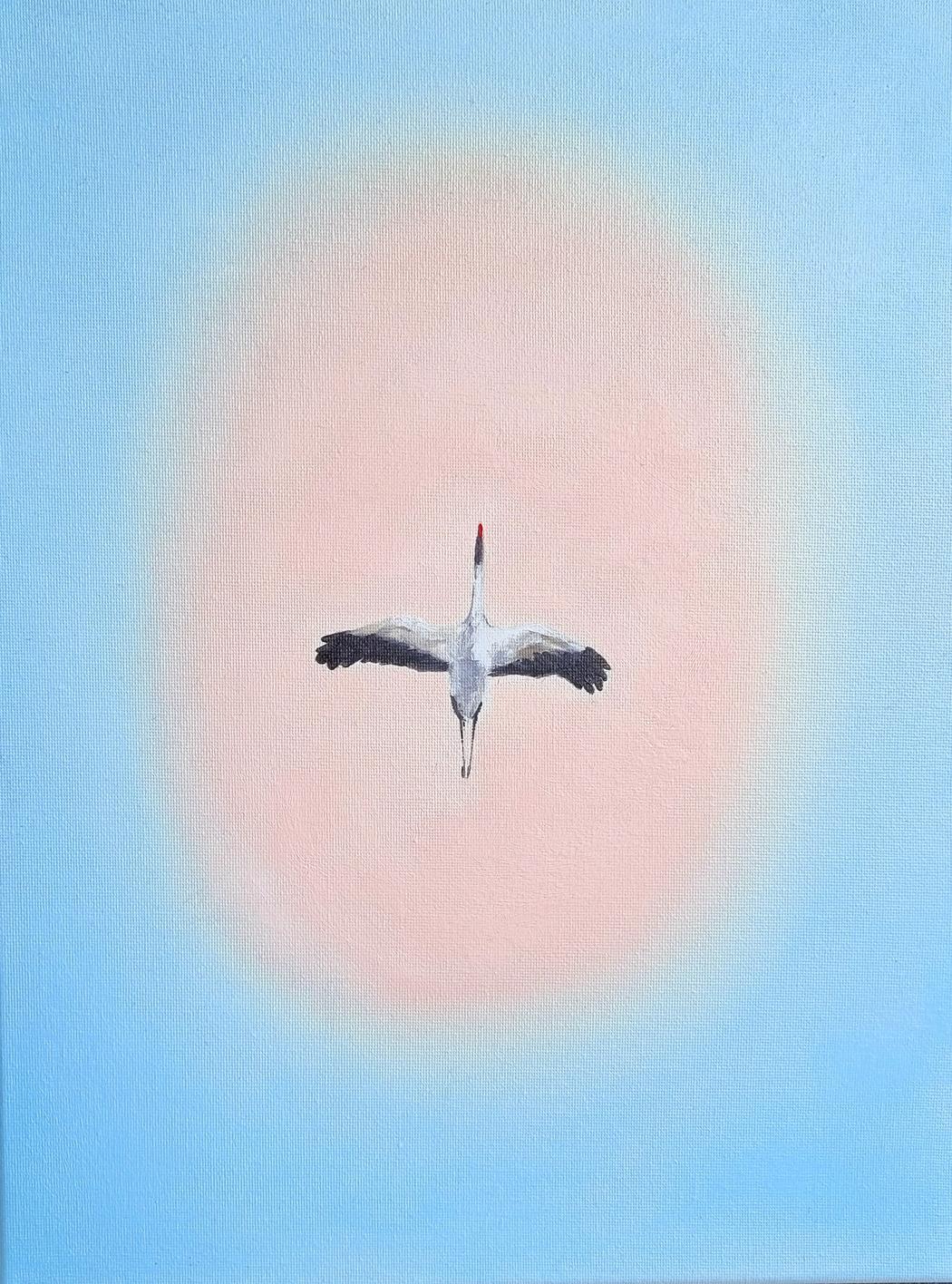Bahar Talebi Najafabadi
Where do you live: London
Your education: not art related
Describe your art in three words: Chromatic, Intimate, expressive
Your discipline: Painting
 Bahar Talebi Najafabadi | Carpet Of Poppies
Bahar Talebi Najafabadi | Carpet Of Poppies
You describe painting as a sensory dialogue. Can you walk us through what that dialogue feels like at the moment of creation?
It is an intensely emotional experience centred on bringing my deeply personal inner world onto the canvas. At the moment of creation, the act feels like an intricate process of matching colors and themes that I myself find beautiful. This dialogue is initiated by an inspiration – a distinct memory or a unique feeling- which I seek to translate visually. My hands purposefully use the paint to express the emotions onto the surface. The entire conversation is a vivid, continuous loop where the emotional impulse drives the color choice, and the resulting visual application affirms or adjusts the expression, creating a finished piece that is a beautiful, tangible record of my subjective feeling.
Colour plays a powerful role in your work. How do you approach colour selection when your goal is to transmit a specific emotional state?
Colour plays a powerful role in my work, but my approach to it is quite instinctive and personal. I selfishly choose what I like, even when the combinations might seem unusual or unexpected. I’m particularly drawn to the tension between pale blues and red, and I love how dark shades of green interact with various pinks and purples. While I do intend for my colour choices to evoke certain emotions in my audience, I recognize that this is only partly within my control. What I can control is my own emotional response—so I search within myself for the colours that spark a specific feeling in my heart, and that becomes my starting point.
 Bahar Talebi Najafabadi | Halo Ascent
Bahar Talebi Najafabadi | Halo Ascent
Many of your recent works focus on the suffering and resilience of women in Iran and the Middle East. How do personal experience and cultural memory shape the way you portray these themes?
I resonate deeply with the pain of others, and witnessing what has been happening recently in the Middle East is a constant source of pain for me as a woman from the region. The realities we face there—whether in daily life or through the news—are far removed from the experiences or perceptions of many in Western societies. What happens can be horrendous, yet it becomes an inseparable part of everyday existence. At this point, I don’t feel the need to show or broadcast what is happening to others—social media already exposes everything in real time. Instead, what I can and want to do is to channel my emotions, to embody that pain and resilience through my art.
The concept of “interpretation” seems central to your practice. What was the most surprising or meaningful interpretation you have ever received from a viewer?
My viewers often have very different interpretations of my work, which I find fascinating. Recently, someone looked at my painting Paradise Rising and told me they saw birds in the sky. That response really struck me because, although the piece is actually based on the bird of paradise flower, the image of birds was my initial inspiration and emotional background for the work. It was amazing to see how another person could intuitively connect with that underlying idea and resonate with it in their own way.
How has relocating to London in 2023 influenced your artistic voice, themes, or techniques?
Relocating to London in 2023 has definitely broadened my perspective. Even just visiting different galleries and seeing the variety of artworks has been incredibly inspiring. London is such a vibrant, metropolitan city—filled with energy, diversity, and culture that seem to embrace you the moment you arrive. That atmosphere has encouraged me to explore new ideas, experiment more freely, and let my artistic voice evolve in unexpected ways.
 Bahar Talebi Najafabadi | Autumn’S Archway
Bahar Talebi Najafabadi | Autumn’S Archway
Your mother and your aunt’s Persian rug designs are key inspirations. In what ways do you feel their artistic legacy appears in your current work?
I have always been blown away by these women’s creativity. I’m confident that any talent or passion I have for art is inherited from them. I feel a deep desire to succeed as an artist, especially because they never had the opportunity to fully present their own work. My mother, a medical doctor, always struggled to find the time to pursue her artistic side. My aunt actually studied art at university, but she was constantly discouraged—by both family and society—who tried to convince her to choose something more “useful” or economically beneficial. I carry both of them within me, and their stories fuel my determination to succeed as a female artist from the Middle East, despite all the shortcomings and pressures that come with that identity.
What do you hope viewers feel first when they encounter your paintings — and what do you hope stays with them after they walk away?
When viewers first encounter my paintings, I want something to immediately catch their eye—a moment of visual intrigue that draws them in. I hope that initial attraction makes them want to look closer, to follow the brushstrokes and textures, to spend time with the work. As they do, I want them to connect with something personal—a feeling, a memory, or a fragment of emotion that resonates with their own experience. My hope is that this emotional echo stays with them long after they’ve walked away, and they could say that they liked looking at the painting, even if they cannot specify the reason.

Leave a Reply